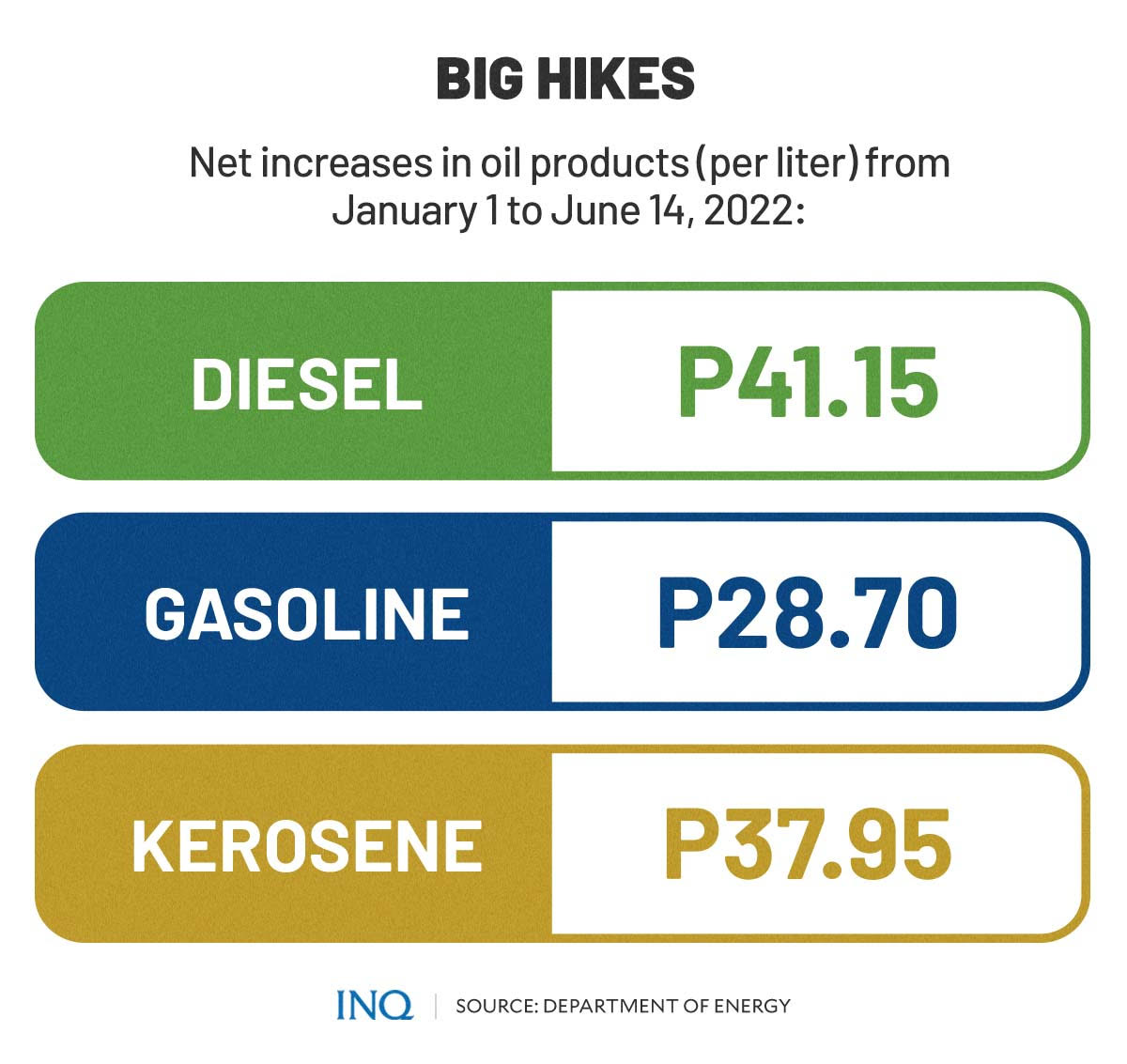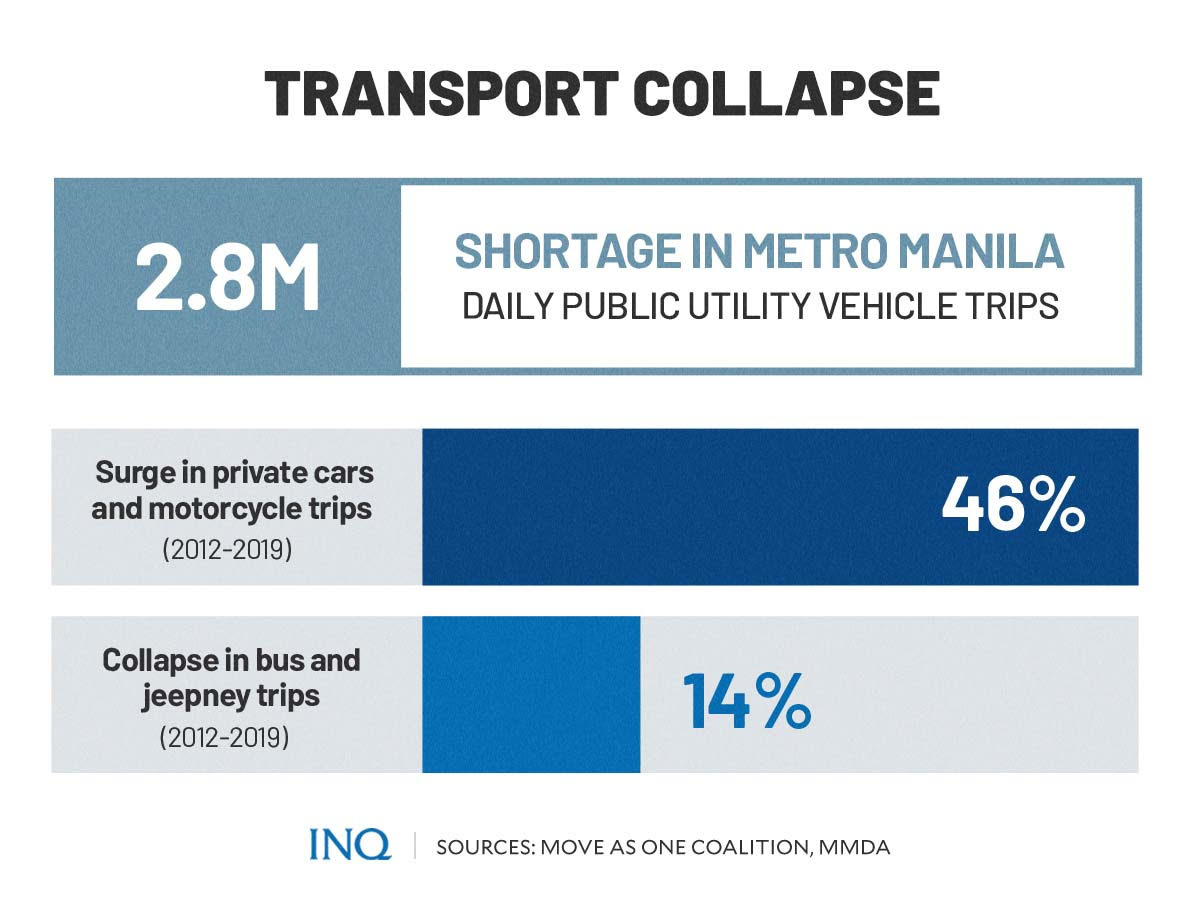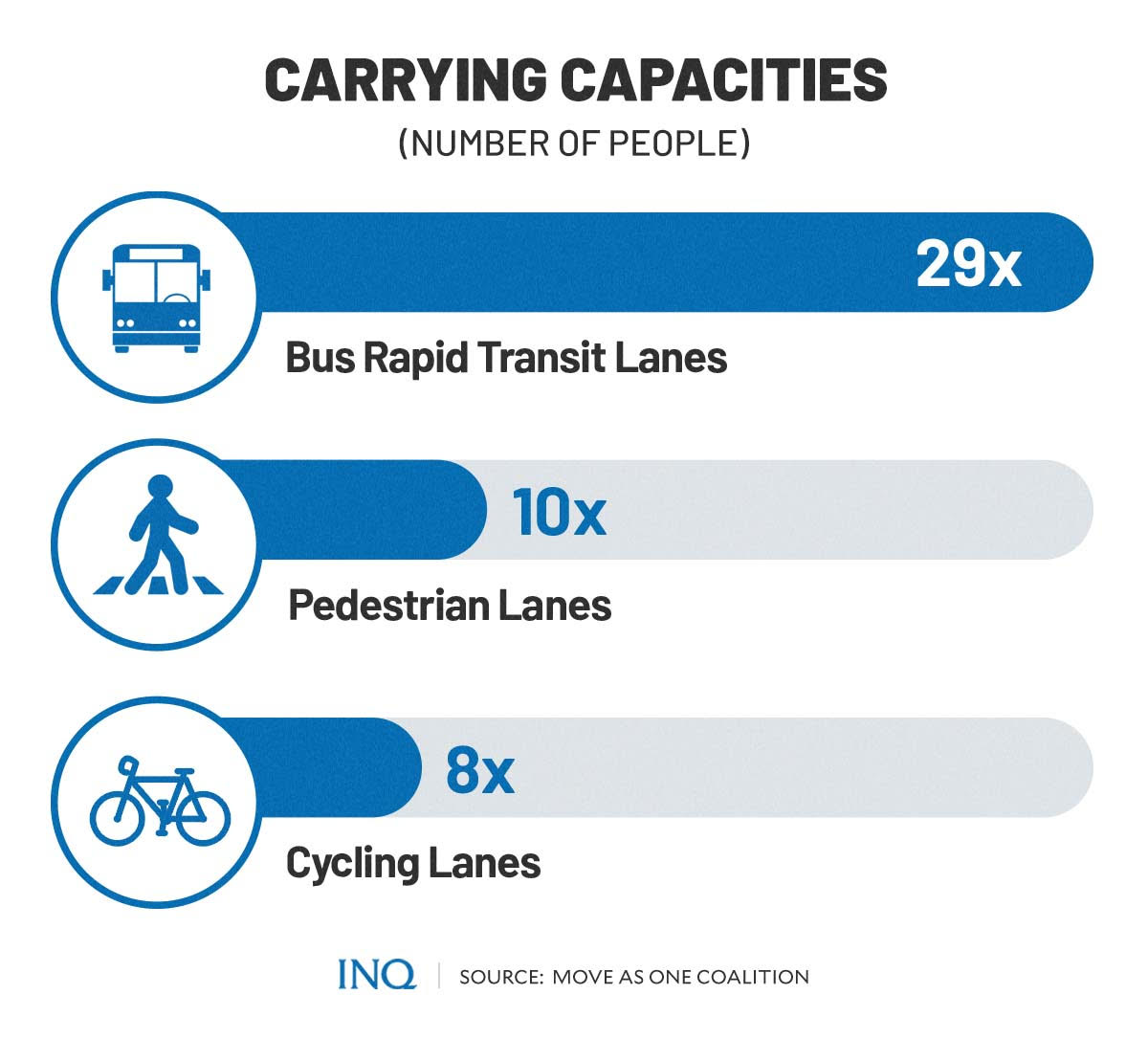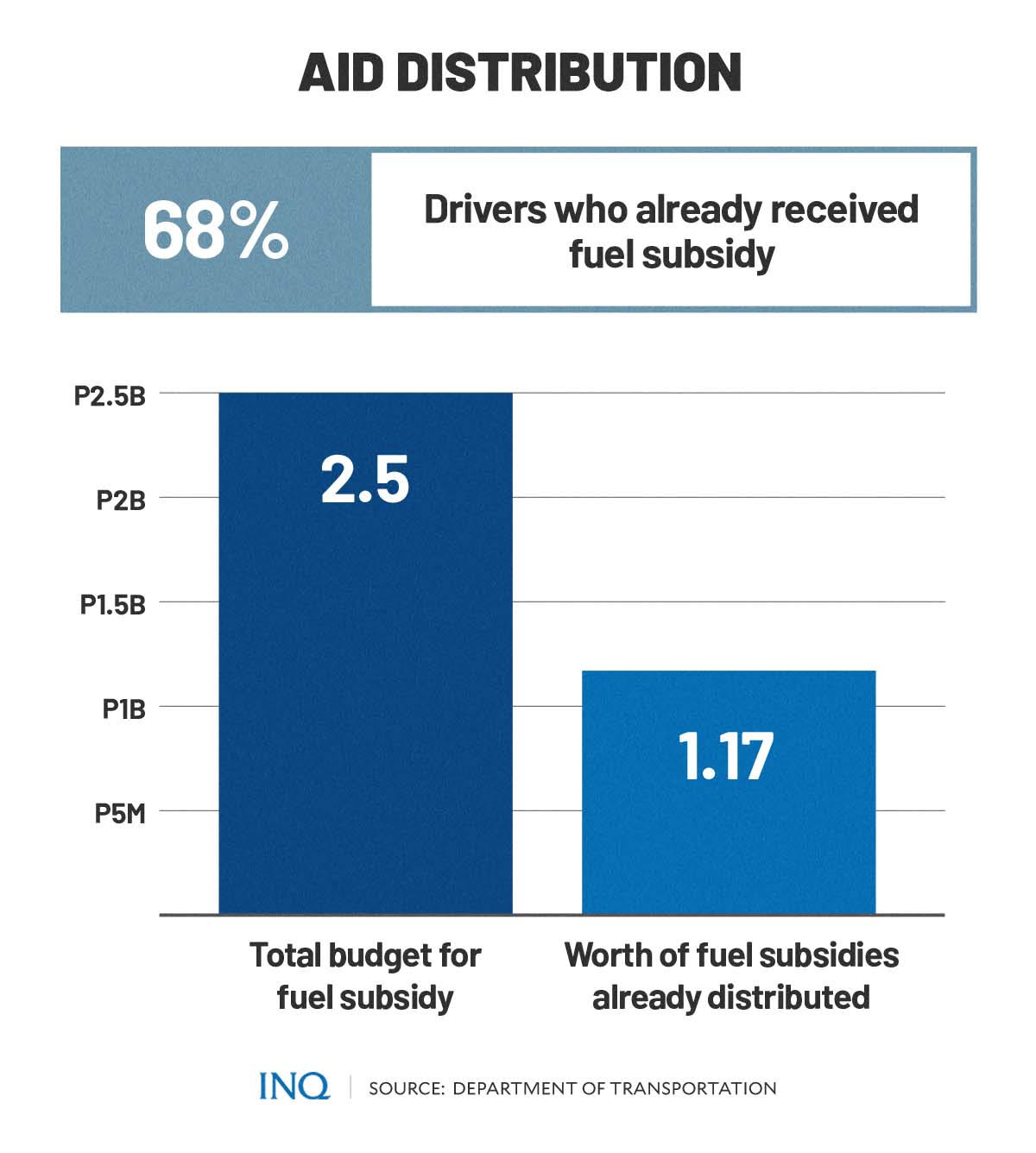Suffering commuters, higher fare, fewer trips: PH transport woes pile up
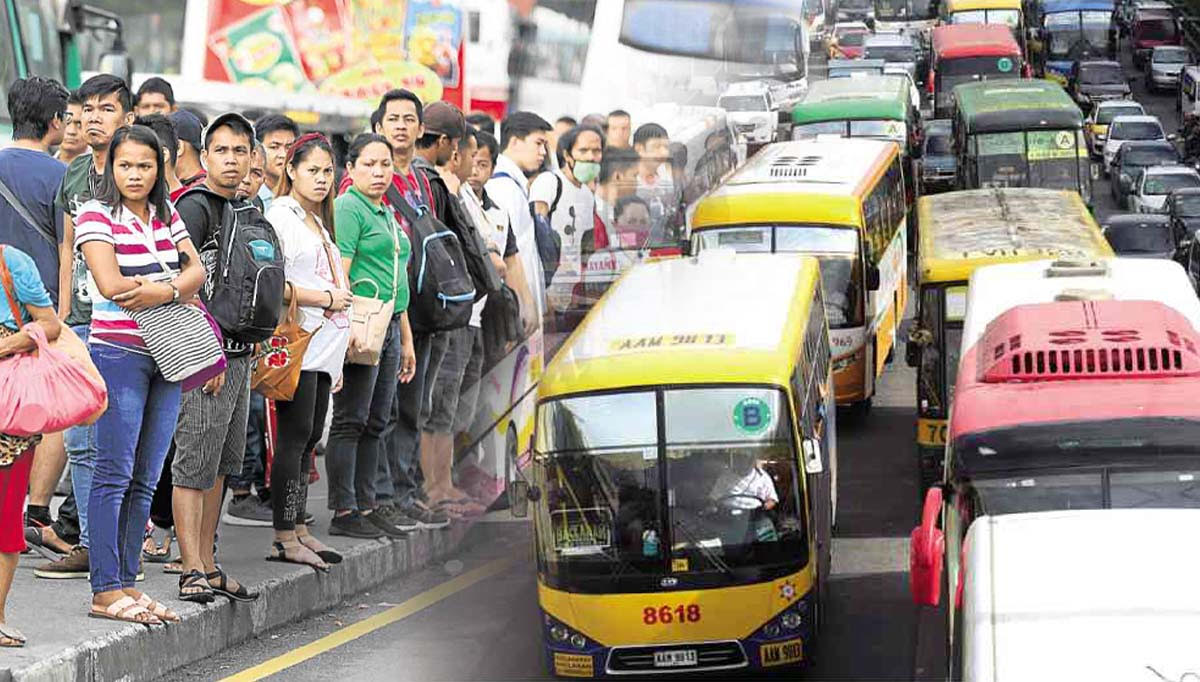
A composite, composed image of commuters and buses representing the growing crisis in public transport. FROM FILE PHOTOS
MANILA, Philippines—The transport sector is in a “deadly spiral” and the next administration should “get us out of this”.
This was stressed by the group Move As One Coalition (Move As One) on Tuesday (June 14) as transport inflation remained high in May, having a 24.5 share in the overall 5.4 percent inflation rate last month.
READ: Expensive food, fuel push PH inflation to 42-month high of 5.4 percent
Based on data from the Philippine Statistics Authority (PSA), transport prices rose sharply, with a 14.6 percent year-on-year change from last year. The rate “significantly outpaces the overall inflation”.
The PSA said one main contributor to the increase was the continued hike in oil prices, most especially for diesel that is most commonly used by drivers and operators of public utility vehicles (PUVs):
- Diesel
May 2022: 86.2 percent inflation
Article continues after this advertisementApril 2022: 83.7 percent inflation
Article continues after this advertisementThe coalition said this was reflected in rising oil prices, drivers losing jobs, public transportation supply collapsing, more commuters experiencing longer lines and waiting times, and crowded commutes in enclosed spaces.
READ: 2-year COVID pause brings public transport change, but new normal looks old
Presenting a 10-point agenda to fight transport inflation, it said the only sustainable way to address the increase in transportation costs and ease pressure on fare hikes is for the government to “wean our economy’s dependence on oil”.
RELATED STORY: PH inflation beyond the numbers: Deeper poverty, hunger
This, as the Move As One stressed that transport workers’ earnings are already “dwindling” because of record-high oil prices, which are preventing them from working on a daily basis.
The Pagkakaisa ng mga Samahan ng Tsuper at Operator Nationwide told INQUIRER.net that because of the oil price hikes, drivers are losing P363 per day for every 20 liters of diesel needed for short routes.
READ: P1 jeepney fare hike: As commuters pay more, drivers still suffer
As a result, some PUV drivers and operators have already decided to stop plying their routes for now because the cost of diesel, which already registered a net increase of P41.15 per liter since last Jan. 1, had eaten up all their earnings.
Based on PSA data, there were 75,000 jobs lost in the transportation and storage industry from February to March 2022. Since 2019, there were over 372,000 jobs lost in the same industries.
This, as public transportation supply is already collapsing, the Move As One said, stressing that even before the COVID-19 crisis, there had already been a massive shortage of 2.8 million daily passenger trips in Metro Manila.
The number of bus and jeepney trips in the capital region likewise collapsed by 14 percent from 2012 to 2019 as private car and motorcycle trips spiked by 46 percent: “There has been hardly any increase in the supply of public transportation over the past decade.”
“The oil crisis has only worsened this shortage of public utility vehicles—and the suffering of countless commuters competing for scarce public utility vehicles,” the coalition said.
Concerned that higher transportation costs will cause higher inflation and threaten economic and health recovery, it said the government should significantly expand public transportation supply and shift transportation demand to walking, cycling, and road-based public transportation.
Time for active transport
The most important policy shift that the government should make, the Move As One said, was for economic managers to prioritize walking, cycling and road-based public transportation.
Last year, results of a Social Weather Stations poll revealed that 44 percent of workers walked to work; motorcycle (24 percent); tricycles (14 percent); jeepney (eight percent); private cars (three percent); and trains (0.2 percent).
For the coalition, it is a “highly inequitable and inefficient policy” to be devoting a high share of the country’s public resources, space, and management attention to projects that prioritize car owners, who constitute “a small and privileged minority”.
From 2010 to 2021, P2.8 trillion worth of resources went to road construction, widening and maintenance while only P40 billion went to projects that will improve walking, cycling and road-based public transportation.
It proposed that the government fill a P150 billion investment gap for road-based public transportation in the next budget cycle, saying that while it is smaller than P2.8 trillion, it is “more effective”.
There are resources
Move as One said that to immediately expand the network of protected bike lanes, and safe and accessible walkways, the government can tap these from the 2022 General Appropriations Act (GAA):
- P13.3 billion in confirmed budget sources
- P275 billion in potential budget pools
The Department of Transportation (DOTr) can implement and spend the P2 billion active transportation budget for the construction of protected bike lanes, wider and safer pedestrian walkways, and at-grade crosswalks for persons with disabilities.
It was revealed by the coalition that as of the present day, the budget has not been used even if there is a requirement in the 2022 GAA which directs the DOTr and and the Department of Public Works and Highways to coordinate at least 50 percent of road space for these:
- Public transportation
- Pedestrians
- Bicycles/light mobility devices
“The DPWH and DOTr should implement DPWH Special Provision 8 which requires all road and bridge projects in the 2022 budget, worth around P264 billion, to include active transport facilities: such as wider and accessible walkways, protected bike lanes, and at-grade pedestrian crossings,” it said.
To move more people, the Move As One said the government should institute PUV-only lanes or PUV-only hours, saying that private car-only lanes are an inefficient use of scarce public road space.
Based on data from the Transformative Urban Mobility Initiative, compared with private car-only lanes, bus lanes enable roads to carry up to 29 times more people, cycling lanes up to eight times more, and pedestrian lanes up to 10 times more.
Likewise, the coalition asked economic managers to encourage local government units (LGUs) to apply for the P10.6 billion Local Government Support Fund to install protected bike lanes, better pedestrian infrastructure, open spaces, and public parks.
‘Genuine’ service contracting program
One of the Move As One’s proposals is to expand the number of public transportation units by stopping the “flawed” Libreng Sakay Program and that delayed wages of transport workers who have already rendered service be paid.
READ: ‘Libreng Sakay’: Gov’t told good intentions are sometimes bad
It previously said that the Libreng Sakay program, which will be implemented through the Service Contracting Program (SCP), carried disadvantages both to operators or drivers of PUVs and commuters.
“The Libreng Sakay Program is not service contracting, and runs against the design discussed by Congress. A genuine SCP should be rolled out, not everywhere all at once, but optimally in highly urbanized densely populated cities on the top five to 10 routes serving north-south and east-west destination points in the locality,” the group said.
The coalition stressed that a genuine SCP, as legislated in the 2022 GAA, has provisions for greater involvement of LGUs in collecting fares, co-financing, and co-implementing the program.
A genuine SCP, it said, likewise provided for setting up the multi-sectoral governance committee where civil society organizations can directly participate and give real-time feedback to ensure the program is used to improve service levels for commuters.
It stressed that the DOTr and the Land Transportation Franchising and Regulatory Board (LTFRB) should already allow the remaining 7,906 units and 66 routes to operate in Metro Manila.
Given that there has been a longstanding moratorium on increasing the number of units authorized on routes, the coalition said the LTFRB should welcome and expeditiously approve applications for additional units from cooperatives or corporations.
These cooperatives or corporations, it explained, should have consolidated operations on the relevant route or have already taken steps to organize as a single legal entity and to work under common leet management arrangements.
Help transportation workers
For Move As One, all PUV drivers, even tricycle drivers and operators, should receive fuel subsidies from the government, especially now that oil prices are still rising.
Based on data from the LTFRB, it already distributed P1.17 billion worth of fuel subsidies to 68 percent of its beneficiaries, however, this is less than half of the total P2.5 billion allocated for the program.
“Clearly, the budget is not reaching many in the industry. LTFRB and the Land Transportation Office should institute a streamlined amnesty program so that vehicle registration and franchise records can be updated and rectified to recognize existing drivers and de facto owners of public utility vehicles,” it said.
Move As One stressed that the DOTr should also ensure the safety of public transportation workers and commuters from COVID-19 by requiring all PUV operators, ride-hailing platforms, public transport terminals, and workplaces to open their windows, to improve fresh air ventilation, and to monitor air quality.

